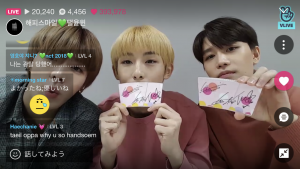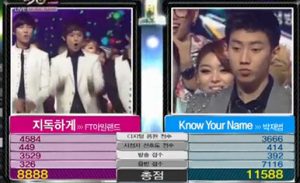Literature application by Mishelle Liu
From his days as a member in the idol group 2pm, Jay Park came a long way to becoming the entrepreneur he is now. What differentiates him from the majority of performers in the popular music industry in Korea, is his cultural identity and his ability to “crossover” (Snorton 2015: 349). The term cross over “a piece of music can be made to appeal to people who would normally not find it interesting” (Ibid.), while a certain type of music will have its target audience, by crossing over, one can make their work appeal to new audiences. The shift in his music style, from typical idol group production to his hip hop and R&B solos, shows how crossing over allowed him to gain new fans while at the same time still appeal to his original fan base.
Hip hop music is a genre in which “authenticity articulates with regulatory discourses on racial purity,” thus, while “’real artists’ and fans are presumed to have experienced its lyrical content matter”, but at the same “music is instrumentalized as a form of racial nationalism” (Ibid., 351). With his American education and background, Jay Park’s journey as an artist in the social context of contemporary Korea is a combination of two cultures and a clash of music genres. To make hip hop music from niche to mainstream for korean audience, he first explores the possibilities of this market from the point of view of a successful idol group, then moves on to seeking possibilities of bringing to his audience more controversial and authentic content. What makes his experience stands out is the stereotypes that regulates the industry.
In conclusion, to Jay Park, there was the struggle to overcome stereotypes in both America and Korea. The difficulty to be recognized internationally as a hip-hop artist for someone with his background goes without saying.
Snorton, Riley. “Dark Cosmos: Making Race, Shaping Stardom.” In The SAGE Handbook of Popular Music, edited by Andy Bennett and Steve Waksman. 346-60. Washington D.C.: SAGE publications Ltd, 2015.

 merely an add on for “disseminating the entertainment and information already produced and aired by television” (Lee 2018, 107).
merely an add on for “disseminating the entertainment and information already produced and aired by television” (Lee 2018, 107). as M Countdown, Music core, Music Bank, and Ingigayo (Kim 2018, 58). This type of programs are widely popular in Korea although they don’t have much presence in North America nowadays. The reason behind is the “demand for live performance” in order to satisfy “the desire for the visual mark of authenticity.” (Kim 2018, 72).
as M Countdown, Music core, Music Bank, and Ingigayo (Kim 2018, 58). This type of programs are widely popular in Korea although they don’t have much presence in North America nowadays. The reason behind is the “demand for live performance” in order to satisfy “the desire for the visual mark of authenticity.” (Kim 2018, 72).